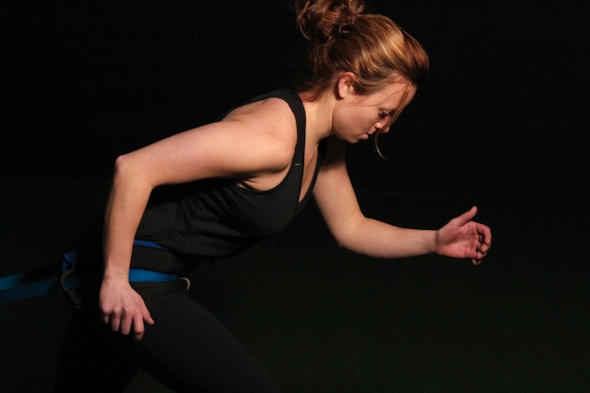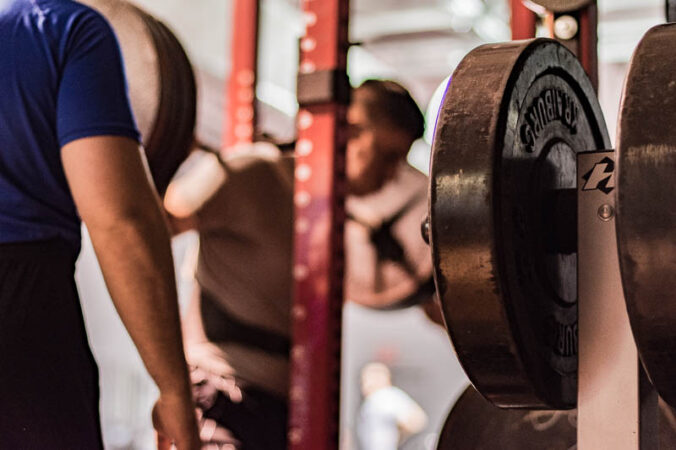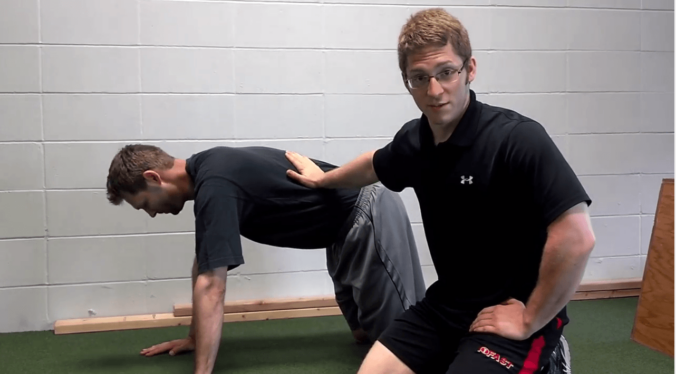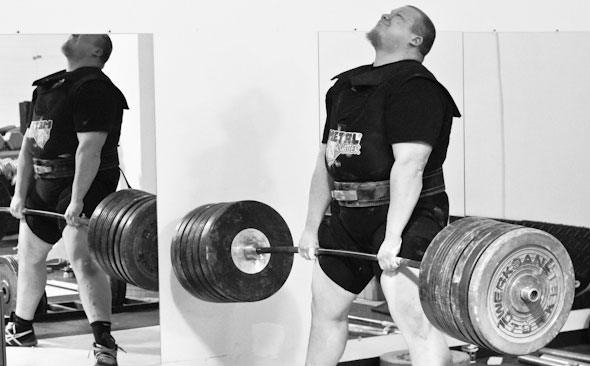I recently had an old friend reach out for help. Below is her question and my response.
Continue readingPersonal Trainer, Fitness Educator, and Web Developer
Tag: coaching (Page 2 of 3)
The single leg Romanian deadlift is one of my favorite exercises to program. My clients know to expect to see it in their programs.
One of my clients was having some trouble performing it a few weeks ago. I broke it down for him and thought the explanation might be able to help some people out there.
Everything following is part of the email I sent him which breaks down my thought process and gives specific cues to address his technique on this exercise.
Imagine you’re a personal trainer. You’ve just told a group of ten of your clients to do barbell front squats, and now they appear to be doing their best impressions of a dying worm. Like a broken record, they’re repeating the phrase, “I can’t do it.” Two of them complain that the exercise is uncomfortable and their wrists hurt.
Due to limitations of manpower, equipment, and time, you have two responses to choose from:
- “Okay. Let’s take you back down to the kettlebell front squat we always do.”
- “Okay. Can you keep going or do you need an alternative?”
Worth noting, you must convey sincere nonverbal and verbal compassion in your response. Obviously, there are other things you can do, such as kick them in the groin and tell them they’re being a child, but the two listed above are the top two choices in my mind. Feel free to discuss alternatives in the comments below.
So which option do you pick?
Continue reading
I shot this video a while back and have sat on sharing it because the exercise technique outcome isn’t great. I think, however, this video shows a good example of coaching on the fly.
- Watch the subject perform the exercise and identify what is wrong.
- Try to think of a cue that will fix everything. If not, fix the issue that will give you the greatest progress.
- When that doesn’t work, try something else. For example, you can show them what is happening, or, as I did in the video, grab them and put them in the right position.
So why does his back still look so stiff at the end?
Well, Ben has been working out for a long time. During his years in the gym, he has heavily cemented his push up pattern (the one you see in the video) over this time.
Maybe I could have made it look perfect, but at what cost? Providing too many cues ensures that no long-term progress is made and puts the client in a stressed out psychological state. They’re either frustrated with you, the trainer, for not being able to help them, or they’re frustrated with themselves for not being able to do what you are asking them.
In my experience, I won’t fix Ben in one day. He has too much neurological stiffness to overcome. He’s quite coachable, but he’ll still be resistant to adopting a new pattern.
What I can do, however, is remind him every time he does his push ups to finish with his arms long like they’re reaching through the ground. I could also have him bring his sternum to his spine, as I tried in the video. Or I could try a million other cues.
Then, I’ll probably notice his “reach” is actually just a crunching motion around the level of the 8th thoracic vertebra, T8. That’s that rounded hump in his back that I mention in the video. You’ll notice that the angle here increases after I cue him. He doesn’t want to turn on his serratus anterior muscles to give him the reaching motion, so he makes his arms longer by crunching them forward.
So then, I have to fix the damage from my previous cue. “Try to stay long through here like a board or piece of wood.” The problem is that it’s really difficult to get someone to differentiate levels of the spine like that. Maybe I get out a PVC pipe and put it on his back to help me. Maybe I give him a different exercise. Maybe I leave it alone and see if it gets better next time.
I will remind him every day I see him, and eventually his brain will learn the new pattern. My cues will change in the time being because there may be a better one for him next week. I’m not necessarily striving for perfect form, just better form.
I know all of this might seem like random babble, but the art of coaching is honing in your thought process and sprinkling in creativity. I’m just trying to give you an example.
The deadlift is a big movement that utilizes every muscle and joint in your body. You better be good at doing it.
But how do you know you’re doing it correctly if you can’t see yourself doing the lift?
Today I want to show you a trick that can help you out. Check out this video below.
The first rep is without a cue to turn on the lats. The second rep is with it.
Watch the video again. Notice the bar’s path of travel.
During the first rep, the bar never really gets to my midfoot, which is about where I would ideally want it. When the bar is in this position, it has better leverage than I do.
During the second rep, watch the bar go back. There I can finally sit into it.
What’s funny, however, is that you may have watched the first one and thought, “Well… that wasn’t too bad.” Then when you see the second rep you think, “Jesus, that first one was terrible.”
Coaching yourself isn’t entirely a guessing game. You don’t have to fabricate a cue out of the blue that you think will work for you. If you’re an inexperienced lifter who lifts alone, film a few sets. Compare set one and set two.
- What did you feel working?
- How did the reps feel?
- Which one looks better: one or two? Make your workouts like a visit to the doctor’s office.
When you aren’t sure what you’re looking at, you need more experience. Try something new and re-evaluate. The secret to the training process is understanding the scientific method. It is simply trial and error. What did I do wrong? How do I fix it?
Now go get strong!
-Lance
© 2025 Lance Goyke
Theme by Anders Noren — Up ↑




